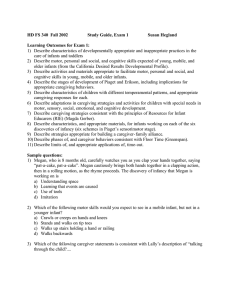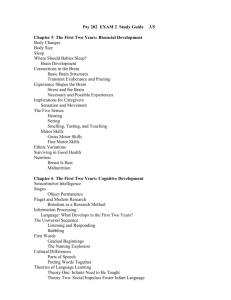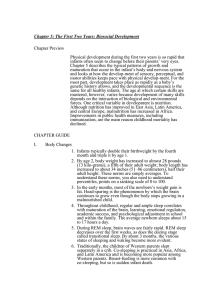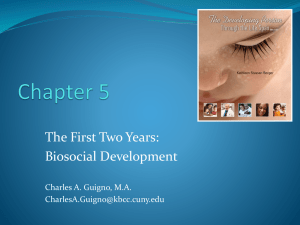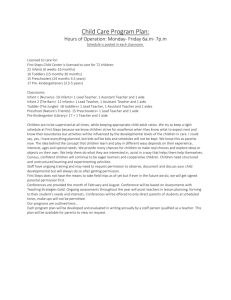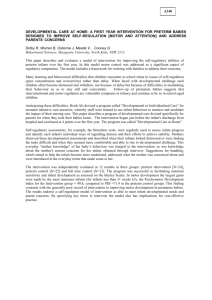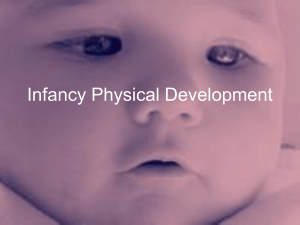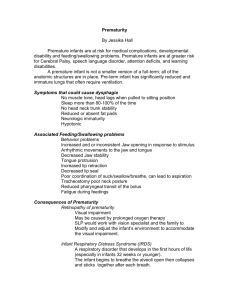Physical Development in Children 0
advertisement
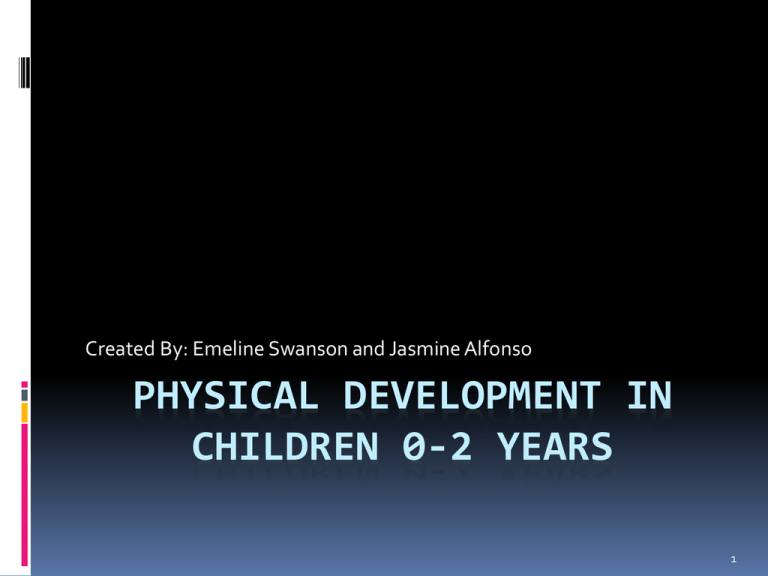
Created By: Emeline Swanson and Jasmine Alfonso PHYSICAL DEVELOPMENT IN CHILDREN 0-2 YEARS 1 Motor Skills Looking • Development in association of what the baby sees & touches touching Grasping Crawling Sitting Walking • Gains the ability to hold onto different objects • Begins mobility and can move on his or her own • Can sit up on his or her own without assistance • Can walk without assistance, and may even be able to run. 2 Motor Skills continued… The 5 motor skills that children 0-2 years go through are milestones which occur from the 1st month to the 14th month (based on averages) The rates of physical and motor development vary from child to child due to: heredity the amount of activity the child participates in the amount of attention the child receives 3 Motor Skills continued… The motor skills of a child develop in two types of patterns; either the cephalocaudal or proximodistal developmental pattern Proximodistal: to develop skills from the center of the body outwards towards the limbs. Cephalocaudal: To develop skills first in the upper body then the lower body. 4 Sensation and Perception Newborns are near sighted. Visual acuity develops quickly. Babies are attracted to objects of light-dark contrast, such as the human face. Depth perceptions is developed a few months after birth (rate varies child to child) Infants respond to tastes, smells, and sounds such as the human voice. Infants are aware of size and shape constancy 5 Development Changes in the Brain New connections form around neurons. (synaptogenesis) Dendrites grow and expand their reach and complexity. Initially support basic biological functions Later in areas of learning Synapses grow in density especially in areas of vision and hearing Synaptic pruning beginning in certain areas Myelination: glial cells grow around the axons to form a fatty coating which insulate the axons 6 Eating and Sleeping Habits Sleeping Habits Infants sleep 16-18 hours every day. Develop wake/sleep cycles. Eating Habits Gain the ability to express hunger to adults. Learn to suck, chew and swallow. On average infants begin sleeping through the night at 10 weeks and 10 pounds. Ability to digest food without abdominal pain. 7 Chronic Health Issues Irregular sleep and wake cycles Trouble being sued Digestive problems Breathing problems 8 Health Facts Less than 1% of infants suffer from birth trauma. Infant Mortality: 9 out of every 1,000 babies die within the first year of life. Leading causes of infant death: Congenital birth defects Sudden infant Death Syndrome Infant brain dysfunction Parental smoking 9 Sources CliffsNotes.com. Physical Development: Age 0–2. 29 Sep 2010 . "Stages Of Play During Child Development." Child Development Guide | Developmental Stages From Birth To Teens. Web. 29 Sept. 2010. . Nudelman, Lauren. "Age Norms: Infant Physical Development." Parenting Literacy. 28 Oct. 2008. Web. 29 Sept. 2010. . Nudelman, Lauren. "Age Norms: Child and Adolescent Physical Development." Parenting Literacy. 16 Dec. 2008. Web. 29 Sept. 2010. . 10

